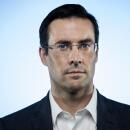Hawthorne police review use of Taser on middle school student
Hawthorne police have launched a misconduct investigation of an officer who used a 50,000-volt stun gun on a violent autistic 12-year-old boy at one of the city’s middle schools, authorities said.
Such use of electroshock weapons by police on young students is rare, but high-profile incidents have sparked fierce debate around the country over when, if ever, Tasers should be used on children. At the same time, an increasing number of police departments are equipping school-based officers with them, according to the leading maker of the weapons.
Taser proponents say the weapons allow officers to safely detain unruly students without resorting to batons or other physical force. But critics argue that little research has been done on the medical effects of shocking children and that using Tasers on minors is inappropriate.
“This is a question of common sense. . . . You don’t discharge a Taser at a child, absent the most extreme circumstances,” said Michael Gennaco, a former federal prosecutor who now monitors internal discipline of deputies for the Los Angeles County Sheriff’s Department.
A Hawthorne police spokesman said the department launched its investigation in response to a complaint by the boy’s parents days after the Sept. 23 incident. He said department officials are reviewing the incident to determine whether the officer followed the agency’s rules on using Tasers.
The U.S. Department of Justice’s research arm found that studies on the effects of stun guns might not be applicable to small children. The Police Executive Research Forum has discouraged officers from using Tasers on young children and other vulnerable people, such as pregnant women.
Some law enforcement agencies, including those in New York City and Las Vegas, have restricted the use of the weapons on minors. Los Angeles Unified School District police officers do not carry Tasers, a district spokeswoman said.
The Hawthorne Police Department’s policy says that officers “may consider other options” before deploying Tasers on juveniles but does not otherwise limit their use on children.
Lt. Michael Ishii said police were called to Hawthorne Middle School after a student grabbed a counselor in a threatening manner and punched and kicked a security guard who intervened. The boy, described as about 5 feet 7 and 130 to 150 pounds, threatened to kill staff members and continued assaulting the guard, who tried to protect other staffers, Ishii said.
“He bore the brunt of the assault,” Ishii said of the guard, who was knocked to the ground at one point. “He was doing his best to block the kicks and punches.”
Officer Vincent Arias arrived at the school about 11:30 a.m. The boy, whose name was not released, continued behaving violently and kicked Arias in the groin as about 200 students looked on from the school grounds, Ishii said.
School officials called the boy’s adult sister to the site but she was unable to calm him, Ishii said. Arias, he said, fired a hand-held X26 Taser when the boy dashed toward the school’s exit and the area where the other students were in a physical education class.
“The police did what they thought they needed to do,” said Donald Carrington, superintendent of the Hawthorne Unified School District. He declined to comment further.
Ishii said the boy was not hurt but that his family complained, prompting the department to launch its investigation. The probe is examining whether the officer should have used an alternative method to detain the boy, he said. Arias declined to comment.
Charles “Sid” Heal, a retired Los Angeles County sheriff’s commander and nationally recognized expert on less-lethal weapons, said that police should avoid stunning children but that he sympathized with the Hawthorne officer, who had arrived at the school without backup.
“I am not a big fan of Tasering a kid, but a 12-year-old assaulting a teacher and officer is a little more of a gray area,” he said. “There is no nice way to handle this situation.”
Tasers have become increasingly common in police arsenals, winning praise from law enforcement officials who say they help subdue combative suspects and prevent more serious injuries.
The weapons, which resemble handguns, use compressed nitrogen to shoot two dart-like electrodes that attach to a suspect’s body. The darts deliver a low-current, high-voltage shock that causes muscle spasms, disabling the suspect.
Some civil rights groups have criticized the devices, with Amnesty International estimating that since June 2001, more than 334 people in the U.S. died after being Tasered.
In June, a federal jury in San Jose found that the nation’s largest manufacturer of the weapons, Taser International Inc., was 15% responsible for the death of a drug-addled man who was repeatedly shocked by Salinas police.
The Arizona-based company says its products are safe and have saved the lives of countless police officers and suspects who might otherwise have been shot.
A National Institute of Justice study last year found that the weapons are safe in the vast majority of cases but also said that more research is needed to determine the health effects of shocking small children and others, such as the elderly.
Steve Tuttle, a Taser International spokesman, said the number of law enforcement agencies that have given Tasers to officers who work on school campuses has grown to well over 4,000. He said the weapons are invaluable for officers dealing with intruders on campus, breaking up brawls or subduing violent students.
“If you’ve got a 17-year-old or a 13-year-old with a knife in their hands, it really doesn’t change the [risks] to the police officer,” Tuttle said. “Most parents would highly object to a baton strike to their son or daughter.”
But incidents involving children zapped by police have drawn criticism.
In Florida, the National Assn. for the Advancement of Colored People complained in 2004 after Miami-Dade police shocked children in two unrelated incidents. A 12-year-old truant was stunned as she ran from an officer into traffic. And a 6-year-old student was shot with a Taser after he injured himself on broken glass and refused to drop a piece of glass.
The police department reprimanded the officer who stunned the 12-year-old but found that the officers in the case of the younger boy complied with the agency’s rules. Three years ago, several Florida state senators unsuccessfully proposed a ban on police using Tasers on schoolchildren under 16.
And in California, Orange County sheriff’s deputies came under criticism in 2007 for stunning a 15-year-old autistic boy who had run away from his parents.
“The risks of using a Taser on a child are just not understood well enough at this point to justify their use,” said Hector Villagra, director of the Orange County office of the American Civil Liberties Union of Southern California.
Villagra earlier this year urged the Orange County department to restrict its use of Tasers.
But deputies said they fired the device to protect the teen and motorists from harm when he dashed into traffic. The boy, who was 5 feet 10 and had a beard, looked older than 15, according to his mother, who also said the deputies’ response was too aggressive.
--
richard.winton@latimes.com
More to Read
Sign up for Essential California
The most important California stories and recommendations in your inbox every morning.
You may occasionally receive promotional content from the Los Angeles Times.












